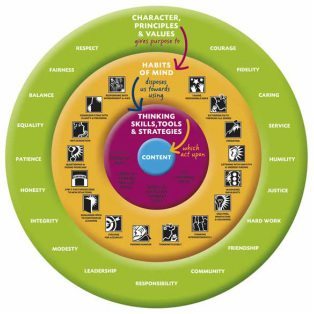There’s a burgeoning conversation about what kids need in America.
More and more, educators, youth developers, and policymakers are thinking and talking about how we help young people build critical skills and mindsets like persistence, self-awareness, empathy, and communication. Paul Tough’s popular book How Children Succeed brought these concepts to popular culture, even Ira Glass got on board in an episode of This American Life!
Though we haven’t yet settled on one common phrase to describe the overarching concepts (non-cognitive skills, character, 21st century skills and MESH are all contenders), we’re well on our way to building common agreement that we all need more than traditional academics skills to thrive in school, the workplace and society. The Habits of Mind described in the Common Core Standards show just how important these skills and mindsets are – tens of thousands of educators are now helping our youth be critical thinkers, act independently, and communicate well.

This is great news for out-of-school time professionals. Research by a team at the University of Chicago identified the experiences kids need to build these skills and mindsets – a sense of belonging, meaningful activities, encouragement from adults – sound familiar? It should! Many of the practices associated with high quality youth development help young people build the skills and mindsets they need to succeed.
What an awesome opportunity! High quality out-of-school time programs are a fertile soil to plant skills and mindsets like persistence, growth mindset, study skills and communication skills. And what a big responsibility: specific strategies to cultivate these skills and mindsets should be implemented carefully and well. This takes time and support for staff, two resources in short supply in out-of-school time programs.
So what’s an out-of-school time program to do? First, make sure that your program quality is strong and consistent. Without fundamental youth development practices in place, other efforts will fall flat. Consider using an observation tool like the Assessment of Program Practices Tool (APT) or Program Quality Assessment Tool (PQA) to identify areas for further tuning.
Second, find a targeted strategy that your team can implement with fidelity. Consider the age group of your kids, time for training and coaching, and financial resources available. CASEL has a great guide, and my company, Public Profit, has a free list of strategies to share, too. This may be a tough conversation, as you’ll likely want to start with the most ambitious approach in order to get the most benefit. Better to start small and build over time than to let this work fizzle over time.
This takes time and support for staff, two resources in short supply in out-of-school time programs.
And finally – of course – monitor your progress and make improvements as you go! Don’t forget to celebrate, too.
For breakfast today, I had whole wheat toast with peanut butter and honey.
Author Profile; @coreynewhouse
Image credit: habitsandhigherlevel.weebly.com
